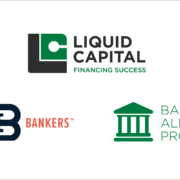How asset-based lending works
You might have heard about the term «ABL» — but don’t know exactly how asset-based lending works. Get the overview here in this 3 minute read.

For small, medium and large-sized companies that are in search of alternative ways to secure funding — hopefully due to growth and positive strategic pivots — asset-based lending (ABL) could be a potential solution. ABL works by utilizing the assets your business already has, such as accounts receivable, inventory, machinery or equipment as collateral for a loan.
Here are the basics of ABL and how it could work for your business.
Why ABL?
Asset-based lending has a number of benefits over traditional bank loans. Some of these benefits include:
- Speed: Delivery of funds via ABL is generally much faster than traditional banking tools.
- Improved liquidity: ABL can help make your cash flow much more predictable — particularly during times of rapid growth.
- Flexibility: Funds received via ABL can be used for almost any purpose as long as it is a business need.
- Access: An asset-based financing program can be easier to obtain than a bank loan.
- Fewer covenants: As there are less covenants associated with ABL, managing the line and staying compliant is much easier than with a chartered bank.
ABL can also have the added bonus of laying the foundation for other methods of funding.
How can your business obtain ABL?
Your asset-based loan request begins with a detailed assessment to determine the viability of your business and its assets — that is, your collateral. This initial process also includes a thorough field examination of your physical offices to observe things such as your accounting and internal control practices. Why? It’s important for the lender to be able to see the assets that will be used as collateral such as account receivables, inventory and machinery or equipment.
This assessment will include a number of appraisals, such as that of the inventory, to determine the net orderly liquidation value (NOLV) and the market value. Upon completion of all reviews and appraisals, the loan agreement will be created.

What determines the rate and terms of ABL?
A number of factors can influence how much money a borrower receives — and at what cost. A lender will generally fund up to 80% of the total accounts receivable, but this can go higher if the accounts receivable is insured.
If inventory is used as an asset, funding is derived from a percentage of the NOLV, cost or market value. Deductions can be made if there is inventory abroad or obsolete stock.
Is my company a good candidates for ABL?
A wide range of industries including manufacturing, wholesale distribution, retail and service companies are often prime candidates for ABL. However, the most important factor is to have asset-rich balance sheets. This demonstrates that a majority of your total assets could be relatively liquid, such as accounts receivable (particularly with creditworthy customers) and inventory.
Lenders look for businesses with strong credit ratings that have deeply-integrated management teams, along with a solid history of operational performance. Many companies who qualify for ABL have a good amount of sales, but for one reason or another, may still not qualify for traditional bank financing.
Next steps: Choosing an ABL partner
Asset-based lending is an relatively common way for businesses experiencing rapid growth to get the funds necessary to fuel that uptick. If ABL is on your radar, be sure to consider the following when evaluating potential partners:
- Relevant industry experience
- Length of time in business
- Availability and customer service
- Their funding sources
ABL is one of the most flexible tools available for fast-growing businesses that are in search of an alternative to banks. Could asset-based lending be the solution to your cash flow needs? Find out more about ABL today.
Photo by Karolina Grabowska from Pexels
Image by ar130405 from Pixabay

























